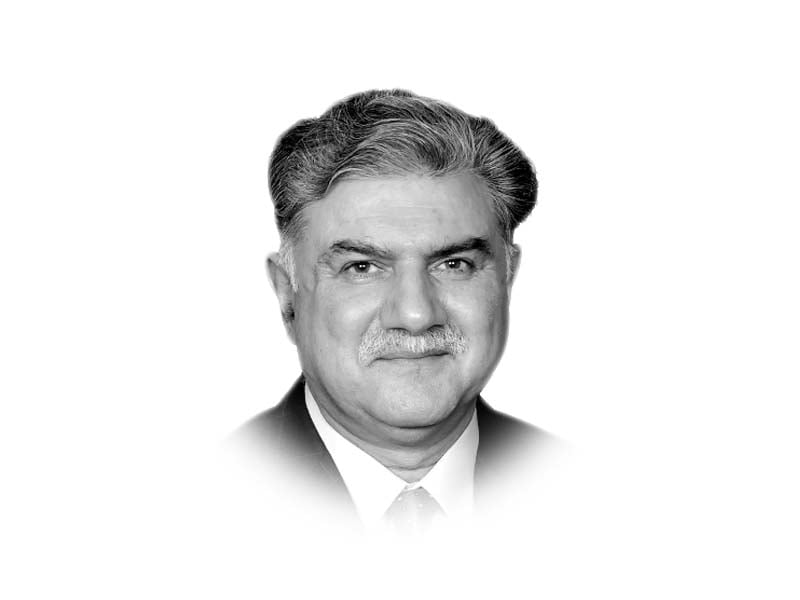
Despite urgings from think tanks from across the border, one was hesitant to participate in the Indian media activities like talk shows, seminars and webinars, for two reasons. First, it was felt that such activities suffered from a "whipping boy syndrome", where the organisers on the Indian side, needed Pakistani participant(s) to: (a) accord some modicum of objectivity to their programme(s) and; (b) to have Pakistan participant(s) as punching bags to satiate/drive their agenda for the domestic audience.
Secondly, such exercises eventually degenerate into shouting matches losing all sense of decency and the spirit of dialogue. One finds no appetite for such diatribes and rhetorical duels. Thirdly, one was apprehensive about the use of Artificial Intelligence (AI), where iterations could be twisted, doctored and presented out of context.
However, the Global Terrorism Council, a Delhi-based think tank proved too persistent to relent. And conceding that it was nevertheless an opportunity to indulge in serious bilateral dialogue involving the younger generation, leading towards a possible way forward, and message to a vibrant Indian civil society, a qualified acceptance was offered. The "India-Pakistan Multi-Generational Dialogue" was a marathon three-day webinar with speakers, one expert from each side and a moderator for numerous sessions.
An effort was made — with limited success — to remain focused on the webinar's stated objectives as the other side consciously steered the proceedings towards India's persistent mantra of "Pakistan-sponsored terrorism", even if we were discussing bilateral trade. Some other observations about Indian group-think follow.
First, the Indian side thinks that Pakistan is not interested in peace due to Pakistan military's institutional interests in keeping the 'pot boiling'. And that it is the military that drives the agenda in Pakistan with civilians just rubber-stamping military dictates. It was reiterated that Pakistan's smaller economy could hardly afford a conflict; that the civil-military bureaucracy has always remained on one page vis-à-vis India; and that peace indeed is in Pakistan's interest. Hence Gen Bajwa's overture of "peace in all directions" during the PAF graduation parade on February 2; and serious parleys by Pakistani military leaders in the past.
The military is to remain a dominant player in the Pakistani context — with or without a threat from India — since it undertakes multifarious tasks of nation-building and disaster-response. And the military knows the value of peace because it knows the cost of war.
It was interesting to have come across rubbish comments like emerging disconnect between any sitting army chief and the wider military establishment, whenever the chief appeared conciliatory on Kashmir. Generals Musharraf and Zia were cited.
Second, it was suggested that there is an asymmetry in the national power potential (NPP) of both countries, with Indian NPP substantially larger than Pakistan’s. This asymmetry should also translate into bilateralism, where India shares greater responsibility and a larger role for making and sustaining peace. Though war fighting is not exclusively and directly proportional to NPP. Factors like the will to fight, motivation and a cause have historically played a decisive role for weaker sides, when fighting outnumbered.
Third, it was pointed out — with concern — that the offensive usage of Indian media by thinly disguised state-sponsored entities has an irreversible impact on the Indian psyche, in particular. Large population segments are subscribing to hate, mistrust and marginalised conduct, with fringe elements occupying the centre stage. The situation becomes alarming given that some 750 websites across 116 countries are targeting Pakistan with mostly fake/motivated content. The scale is phenomenal, considering that over 600 million Indians use the internet and around 230 million subscribe to WhatsApp (larger than the total population of Pakistan). Such embedded demonisation would keep haunting bilateral peace; and without peace between these two countries, South Asian progress and Indian rise remain stunted.
Fourth, return to the composite dialogue remains the only viable option as consistently reiterated by Pakistan. A composite dialogue should not and cannot move forward without discussing the core issue of Kashmir, which has profound demographic, psychological, economic, political and religious significance for people in Kashmir and Pakistan.
Fifth, it was suggested to look into the Indo-Pakistan relationship through the — yet to be deliberated — "tri-lateralism" of Pak-China and India. Any de-escalation will have to involve all three to be meaningful and effective. De-escalation between any two will not automatically bring peace with the third country in the emerging situation… India versus China/Pakistan and vice versa.
Sixth, civil society has to lead where diplomacy fails and cannot deliver. Despite the growth of ultra-right fringe, India boosts a vibrant civil society. The RSS/BJP policies lead to uncomfortable outcomes and need to be resisted.
Seventh, both nations need to get out of the "action-reaction psychosis". Every incident of violence in India cannot and should not be ascribed to ISI/Pakistan. Pakistan's regional dynamics constitute a complex war on terrorism, for over two decades in/along/outside its Afghan borders, in collaboration with some 50 countries, led by the sole superpower. This protracted conflict has created lots of loose cannons, soldiers of fortune and non-state actors, willing to be hired by this or that power, to do their bidding.
Eighth, contrary to the popular belief in Indian academia, that India is a status-quo power; it was pointed out that India under the Modi-RSS combine has become a 'revisionist state'. The revocation of Article 370 in Kashmir, the Ladakh adventure against China, muted intervention in Maldives and Sri Lanka and domination of Bangladesh, Bhutan and Nepal are some cited examples.
India-Pakistan have traditionally found solutions to their problems through third-party mediation, like the Indus Waters Treaty (1960), Tashkent negotiations to end the 1965 war and US mediation after the Kargil conflict (1999). So Indian emphasis on bilateralism is never going to yield peace, unless India relents as a larger and bigger stakeholder. Additionally, from the Indian side, it would be of value to analyse the situation from Pakistan's standpoint, wearing our shoes. A lot would start making sense.
We need to get over the pangs of 'Partition' and not 'independence'… as is often mentioned. India's unending use of terrorism as a ploy; filling younger minds with hate through irresponsible use of all media; and the intransigence of the older generation on either side, will take efforts to peace nowhere. Both must 'seize the moment' and the beginning should be now. Finally, India needs to know that the debris of a vanquished Pakistan will surely wash ashore Bombay and its Western ghats.












COMMENTS
Comments are moderated and generally will be posted if they are on-topic and not abusive.
For more information, please see our Comments FAQ